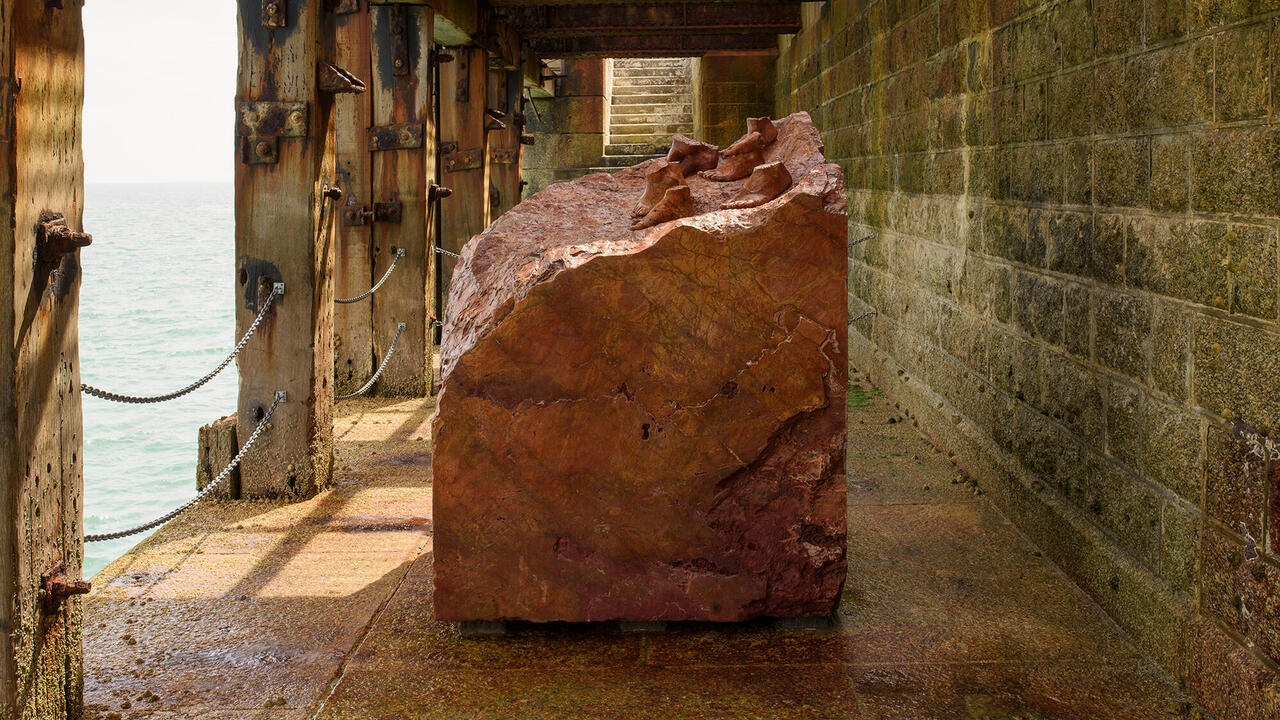Paul Noble
'Nobson' is an imaginary town conceived by Paul Noble and described in his book Nobson Newtown (Salon Verlag, 1998), a humorous parody of various genres of tourist, museum and heritage guides. The Chisenhale show comprises 12 of the extremely large, unframed, graphite pencil drawings used to illustrate the book. As these are large works, and their intention is satirically humorous, the effect is of a monumental, extended whimsy.
The book describes the history of the Nobson area; its geology, ancient inhabitants and their religion, through to Nobson old town and its socio-economic makeup prior to its destruction, to make way for Nobson Newtown. The planning of the new town is described in detail - its shopping mall and amenities, leisure areas, work spaces and types of accommodation, which are architect-designed slums. Noble's parody takes various swipes at local-level democracy, and its municipal processes involving planners, politicians, bureaucrats and an apathetic, modern slum-dwelling public.
The form of Nobson's new buildings - a sort of New Brutalism bunker look - is based on a three-dimensional font designed by Noble. The buildings therefore correspond to letters of the alphabet and, with some difficulty, their groupings can be read as words - although these are never particularly significant. The architecture is depicted in a rigidly isometric manner within the landscapes, emphasising a contrast between the organic and inorganic.
Unemployment is a principal theme, and although there is no industry, Nobson boasts a huge, non-working, industrial-looking building: C.L.I.P.O.N (1997), an acronym for the Chemical and Light Industry Plant of Nobson, which is offered as a conceptual model of work, as 'something with lots of pipes, smoke and general sprawl'.
Cynically representative of the dispirited demoralisation of the town is Nobson's 'job club'. This has 14 entrances, designated by letters of the alphabet corresponding to the surnames of the unemployed. After entering their designated doors correctly, the jobless in fact all converge together in one huge space at the rear of the building. The reason for this is less Kafkaesque than a matter of ineptitude: 'the designers of the building didn't really have any idea what actually happens in such a place', although recognition is given 'to a functioning monument to uniformity and to work'.
Noble's drawings are impressively large, and a great deal of imaginative work has gone into them. However, when the balance begins to tip towards their being simply illustrations to a text, rather than artworks in their own right, the category prejudices and preferences of the viewer may create problems. Just as Saul Steinberg's work suffered when it crossed a sensitive boundary, by seeking a change in status through exhibition in art galleries, so Noble finds himself working in a dangerous area.
Noble's drawings are consistent with certain principles of illustration in that they not only look good when reproduced in print, but are actually improved. The relative scale of imagery within works is consistently uniform, and does not exploit disparities of scale in the way that an original artwork might wish to, with its greater indifference to losses in the process of reproduction. In these senses, Noble's work can be seen not so much as the working out of a singular mania, or of an eccentrically dedicated fanatic, as first appears, but simply as extremely professional.
Noble is working in a tradition that variously includes Swift, Dickens and C. S. Lewis, as well as Mervyn Peake's Gormenghast, Anthony Earnshaw's Musrum, and Irvine Welsh's mock Edinburgh tourist guide. A bit of Steinberg, M. C. Escher and some fantasy architecture is also included. In other words, Nobson fits within an eclectic fantasy tradition with an interest in social purpose.
Noble's new town is bleak. In spite of the vast human architecture he has invented and drawn, and the socially constructed ordering principles of the society that has determined Nobson, his work involves the total absence of any human representation. There are no people anywhere. The author of Nobson Newtown claims that 'the truth is that wherever man goes, destruction and sadness aren't too far behind'. The most optimistic work in the show depicts the sea, The Sea II (1996-7), which nevertheless lacks boats, ships, swimmers, or any other record of human presence.
Nobson is deeply personal and, being named after Noble, includes Paul's Palace (1996), the artist's privileged building surrounded by a strict fence, like a dictator's palace. In some respects Nobson Newtown seems intended as a tyranny of Noble upon the world, part of the self-perpetuating basis of hatred, rather than just a protective response to the world's injustices. So, despite Noble's enjoyably grim humour, and one's admiration for his dedication to his craft, the supreme status enjoyed by the artist over his world is, in the final analysis, resolutely sad.
















